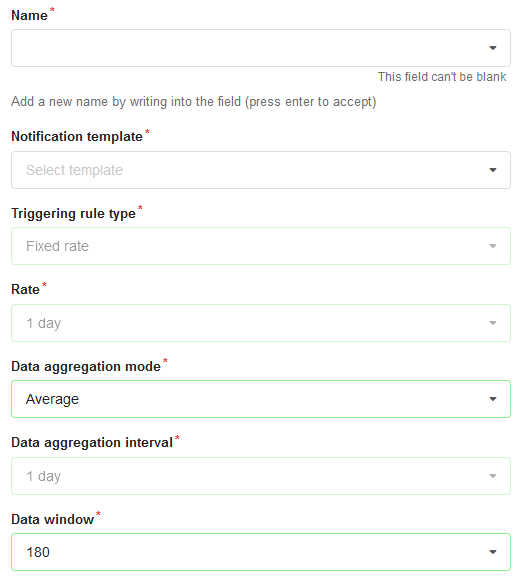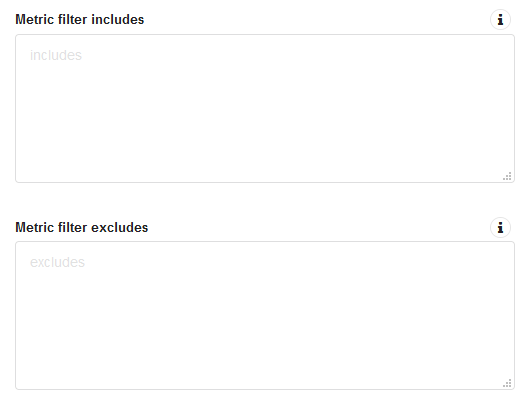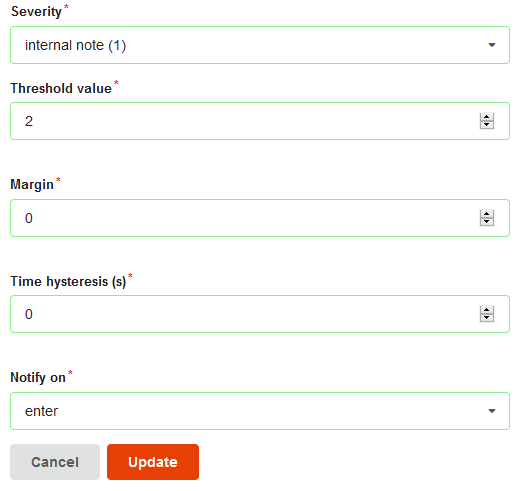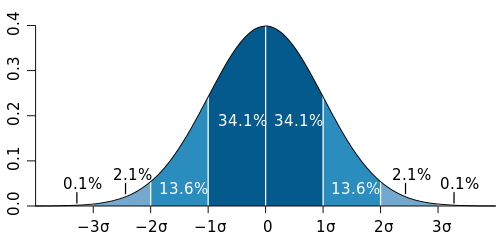Alarm rules are created in the Alarm rules page in the configuration view.

First you need to select the Alarm type. Select Cloud Anomaly Revealer


Name is freely selected administrative name for the alarm. NOTE: Remember to hit enter-key after typing the name.
Notification template is one of the message templates you have created earlier. Templates on all of the parent levels are available for the rule.
Triggering rule type & Rate both only include one option and are thus non-changeable
Data aggregation mode selection defines the mode of the value being monitored. For vibration analyses the selection should be value, but for analog measurements where the measurement is taken multiple times between the sample it can also be minimum, maximum or the average for the period.
Data aggregation interval has only one option and is non-changeable. Aggregation interval is the time resolution of the alarms. When 1 days is selected it is the daily averages that form the basis for the analysis.
Data window defines the length of the data period that is used for the analysis of what is defined as normal variation. If you have no strong reason to select otherwise, select the default 180.

With include and exclude filters a user can restrict which metrics are matched while Anomaly Revealer analysis is performed.
The include filter is of higher priority. Exclude filter is used to further adjust the list of metrics that remains after include filter is executed. A blank filed means that all metrics of the device are matched.
Metric filter set help
In order to create a valid metric filter, use format myTagKey:myTagValue to write a filter, each part should be a string but for tag value, a regular expression is also valid.
Use word AND (case matters) to add more filters in a line.
Each line is treated in OR fashion, which means all filters in the line will be matched, and if there is no match, the next line will be tried.
Press enter to create another filter set.
Example:
Assuming that two metric filters are needed for includes field:
The first one contains two filters (tag value, in this case, is a regular expression, any string will work.):
- tag key is quality, tag value is ^revolution$
- tag key is unit, tag value is ^rpm$
The second one contains one filter:
- tag key is quality, tag value is temperature
A valid format would be:
quality:^revolution$ AND unit:^rpm$ quality:temperature
This means all metrics with temperature in their quality will be matched, as well as metrics with revolution/rpm.
Threshold settings

Severity is the level you wish to configure for this entry.
Threshold value defines the multiple of standard deviation that is the basis for the threshold. For example, if 2 is selected, 95,4% of the values are expected to remain below the limit. It is recommended to use Threshold value 3 for ‘Warning‘ and 4 for ‘Critical‘ levels, as this will prevent unnecessary alarms from happening.

Margin is not applicable. Select 0.
Time hysteresis is not applicable. Select 0.
Notify on, user can select if the alarm should be triggered when a new zone is entered, left, or both.

All values can later be overwritten when the rules are taken into use for a specific metric in a specific device.
NOTE: If the save button is inactive, greyed out, double-check if you have hit the enter key when giving the name for the rule.